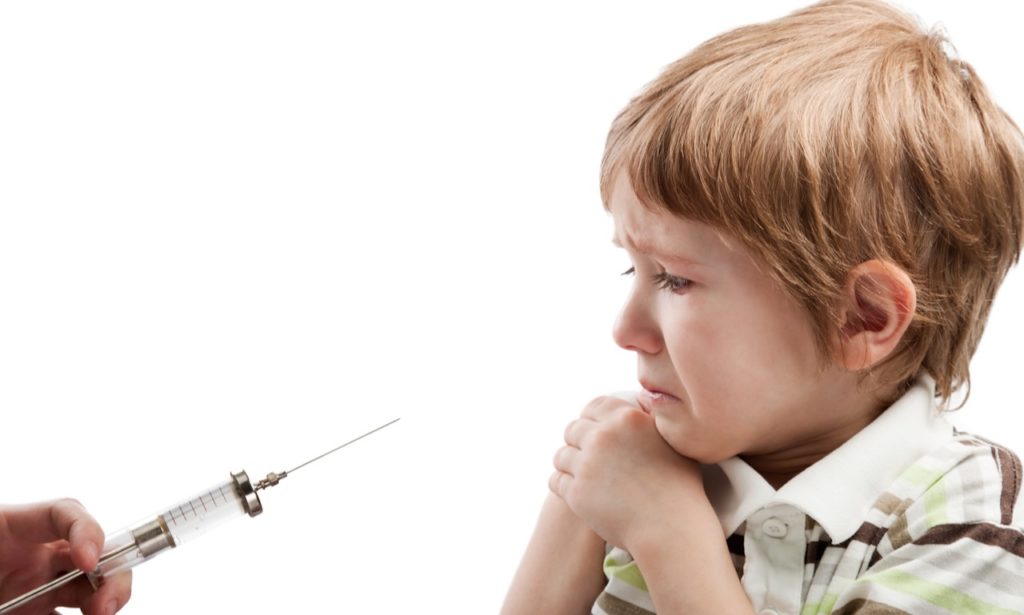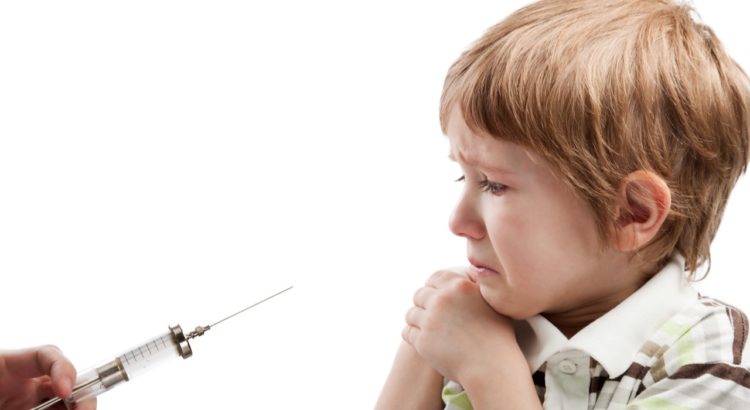
Update on our original Evidence Review

“known immediate adverse events in children — and potential late-onset effects from vaccines that have still not been ruled out — remain a huge cause of concern.“
There has been a vast quantity of water under the bridge since this article first appeared in March 2021 as part of HART’s COVID-19: an overview of the evidence. Despite numerous unanswered questions to the regulators, and legal challenges, the ethical and legal precept of protecting children was dropped in the clamour to protect society as a whole.
More than one year on, it is of extreme concern that so many warning signals have been blithely ignored. Covid injections for healthy young people should be halted forthwith, as there is huge evidence of harm and any estimates of benefit are tenuous, confounded and based on conjecture. Instead this runaway train continues in younger and younger age groups on the basis of clinical trials that are woeful in both methodology and results. Please read our article on the FDA’s unanimous approval that was granted in 0-4 yr olds on 16 June 2022. This is the most shocking regulatory failure to date, although the bar has sunk so low that these abhorrent and completely unscientific decisions seem almost inevitable these days.
The development of new vaccines against SARS-CoV-2 to the point of temporary approval[1] has been the main tool promoted by the Government in the management of COVID-19.[2] Clinical trials are still ongoing but published follow-up has been seriously curtailed by the decision to vaccinate the majority of participants in the placebo arm of the trials, after only a median of 4 months from the second dose.[3]
The vaccine rollout from the Joint Committee on Vaccination and Immunisation (JCVI)[4] prioritised people in nine categories according to risk, commencing with care home residents over the age of 80 and working down through the age groups and those either professionally or clinically vulnerable. It was estimated that 99% of those at risk of death from COVID-19 would have been vaccinated when these nine groups have been completed. Trial data claimed good protection (~90%) against serious illness and death.[5],[6] A Scottish study suggested transmission might also be reduced by immunisation,[7] but real world events have demonstrated this to be nothing better than wishful thinking (indeed, the vaccines were not designed with this function in mind). In any case, given that it was anticipated that the vast majority of those at risk would be protected against severe disease and death, transmission should have become much less relevant. Vaccine-induced immunity for the vulnerable could have added to the population protection of the acquired immunity provided by those members of the public who had already recovered from COVID-19. It is puzzling why this cohort was never factored into calculations of population immunity.
Fast-forward to June 2022, and COVID-19 vaccines are still under conditional marketing authorisation for all age groups. For a few weeks after the adult rollout was complete, the JCVI advised that only those children at very high risk of exposure and serious outcomes, such as older children with severe neuro-disabilities that require residential care, should be offered vaccination, with full explanation to parents on the paucity of safety data.[8] They were clear in their advice that the balance of benefit and risk was too close for a rollout to healthy children. However, the JCVI minutes[9] reveal that two days after their July 2021 statement, they were asked by the Chief Medical Officer to convene an emergency meeting to reconsider their decision. At this meeting, the concerns about potential known and unknown adverse events was discussed, and a decision was taken to offer a single dose of Pfizer vaccine to 16-17s, but still with no recommendation for younger age groups. By this stage, data from around the world were signalling a risk of cardiac inflammation (myocarditis) occurring particularly in young men and teenage boys. JCVI held a tele-conference with cardiologists from the US and elsewhere to discuss this [10]. The minutes of this and another meeting the following day, reveal serious concerns among JCVI members regarding the potential risks of the vaccines in children and their advice to government was, “Overall, the committee is of the opinion that the benefits from vaccination are marginally greater than the potential known harms… but acknowledges that there is considerable uncertainty regarding the magnitude of the potential harms. The margin of benefit, based primarily on a health perspective, is considered too small to support advice on a universal programme of vaccination of otherwise healthy 12 to 15-year-old children at this time.” Despite these reservations — a majority voted in their meeting on 2 September 2022 [11] against advising vaccination of this cohort on health grounds — the JCVI passed the decision to the Chief Medical Officers, who judged that “likely vaccination will help reduce transmission of COVID-19 in schools” and hence benefit children’s education and their mental health[12]. At that time it was clear that most of the disruption to education stemmed not from the direct effect of covid-19 on the children themselves, but on the widespread policy of sending whole classes or even whole year groups home if there was a positive case and indeed the policy had been scrapped in late July, just as the summer term was ending.
HART criticised this ludicrous reasoning at the time[13]: the modelling used to support the CMOs’ decision estimated that 15 minutes of education could be protected for each child vaccinated. It took no account of the time taken out of class to receive the vaccine, which more than offset any time gained, and also ignored the possibility of any time lost from vaccine adverse events.
The initial rollout to this age group was initially for a single dose, in recognition that most of the cases of myocarditis were occurring after the second dose. In November 2021[14], this was extended to a second dose but with no additional data to justify this. In Hong Kong[15], the incidence of myocarditis in adolescent boys after the second dose of Pfizer was reported at 1 in 2,680 and the second dose there was discontinued, just as it was being rolled out in the UK. Those children in the US who have suffered from post-vaccination myocarditis, have shown a high incidence of late gadolinium enhancement (LGE) on their cardiac MRI scans, both at the time of initial illness[16] and at 3-6 month follow up[17]. This scan abnormality is known to be associated with poor long-term outcomes in myocarditis form other causes.[18]
In February 2022, even more illogically, JCVI recommended a ‘non-urgent offer’ for vaccination of 5-11-year-olds.[19] Reading their statement, they appear very lukewarm about it. By this stage, omicron was in full sway, with a clear reduction in virulence, moreover 85% of children were already estimated to have had SARS-CoV-2 infection. This has now risen further to an estimated 96% of 5-14-year-olds.[20] There is now excellent evidence of robust immunity following infection[21], especially in children and this is in stark contrast to the waning of vaccine efficacy over time[22].
In pushing these vaccines onto children, we are entering into very questionable ethical terrain. The main concerns remain as outlined more than a year ago:
● The vaccine trials in children are all underpowered for serious but uncommon adverse events. In the conditions for post marketing surveillance, Pfizer are carrying out a 5-year study on myocarditis due to report in 2027. The original trials are not only underpowered but, as with the adult trials, have proceeded to allow vaccination of the control group children as soon as emergency approval has been granted and hence have no possibility of considering medium to long term adverse outcomes.
● Even in adults the vaccines being rolled out have only limited short-term safety data and no long-term safety data available.
● Known, potential, late-onset effects from vaccines that have not yet been ruled out include adverse immune response to infection,[23] neurological disorders,[24] autoimmune disease[25] and pregnancy related problems[26] which could take months or years to become apparent.
● Pfizer-BioNtech and Moderna vaccines involve completely new mRNA vaccine technology which has never previously been given to a large population.
● AstraZeneca, while involving a standard delivery method, still involves presenting DNA fragments to the host cell which will then be taken up by the host to programme for spike protein production rather than the more traditional whole virus or viral protein technologies.[27] That this vaccine was suspended in over a dozen countries over blood clot fears is cause for concern.[28]
● Children are at extremely low risk from COVID-19 with only 6 otherwise healthy children dying in the first two waves in of the pandemic [29] In context, COVID-19 accounted for 0.54% of all childhood deaths in the UK and 6 other countries over 12 months.[30] Around 30-50% of children remain asymptomatic and admissions to hospital or intensive care are uncommon.
● A small number of children have been reported with Paediatric Inflammatory Multiorgan Syndrome but the vast majority have made a full recovery.[31] and cases have been reported after breakthrough infections.[32]
● ‘Long Covid’ has been quoted as a reason for vaccination, but it is generally milder and shorter lasting in children and given the unknown risks of adverse events from vaccination, this is not a reason to proceed.[33]
● Children are also much less likely than adults to transmit the virus,[34] indeed living or working with young children reduces the risk of severe disease.[35] Therefore the argument of ‘protecting others’ is not applicable. Moreover, it is now apparent that the vaccines do not prevent infection or transmission, indeed triple vaccinated adults have a higher infection rate than the unvaccinated.[36]
● There are still serious concerns about ongoing effects of the vaccines on the immune system. It is particularly illogical to be vaccinating children now with a vaccine known to have poor efficacy against the current variants and which maybe result in imprinting of the immune mechanisms, a concept known as ‘original antigenic sin’.[37]
● Serious adverse events including fatalities in children have been reported in the US[38] and around the world.
For all of the reasons cited above, it would be highly unethical to vaccinate children who are at such low risk from COVID-19. Any potentially long-term negative outcomes from vaccination are especially important for children, for whom so many more years lie ahead and whose immune and neurological systems are still developing.
Although HART had raised concerns about potential safety of these new rushed products, we had not anticipated them being marketed so heavily even to low-risk young adults, let alone children. The NHS has pushed these products with threats of vaccine mandates for night clubs and for NHS staff, both of which were subsequently dropped before implementation. Full page newspaper advertisements, vaccine centres set up in football stadia, theme parks and nightclubs, incentives ranging from pizzas to Uber rides, local government guidance[39] on behavioural methods of reducing ‘vaccine hesitancy’ in the young, are unprecedented.
These vaccines are all still under conditional marketing authorisation, with trials yet to be completed. Giving what is effectively therefore a research product to children, in advance of published adult long-term safety data, is in breach of the Nuremberg Code.[40] It is all the more surprising to find that covid vaccines have been quietly added to the routine children’s immunisation schedule[41]. As I write, the FDA has just approved authorisation of Pfizer for 0-4-year-olds[42], despite Pfizer’s own data showing poor efficacy[43], leading to a three dose regimen. Our own MHRA and JCVI will doubtless follow wherever the FDA leads, but before they do, they would be well advised to read this letter from Senator Robert F Kennedy [44].
We need not look far back into history to remember the devastating harms a rushed-to- market vaccination can have. Over 1,000 children were permanently disabled with narcolepsy caused by the Pandemrix Swine Flu vaccine[45]. Rapid rollout of a new vaccine for Dengue fever resulted in the deaths of 10 children in the Philippines, not at the time of the vaccination but months later when they next encountered the Dengue virus.[46] To repeat any such mistakes here would be unforgivable. The immune system is phenomenally complex and still poorly understood. Experimenting on children for a disease that carries vanishingly small risks, is a road no ethical society should take. It is a clear departure from the precautionary principle and the scientific experts at HART continue to strongly advise against it.
References
- Oxford University/AstraZeneca COVID-19 vaccine approved
- Boris Johnson hails 15 million jabs as ‘significant milestone’ – YouTube
- Information for Healthcare Professionals on Pfizer/BioNTech COVID-19 vaccine
- Joint Committee on Vaccination and Immunisation: advice on priority groups for COVID-19 vaccination, 30 December 2020 – GOV.UK (www.gov.uk)
- Safety and efficacy of the ChAdOx1 nCoV-19 vaccine (AZD1222) against SARS-CoV-2: an interim analysis of four randomised controlled trials in Brazil, South Africa, and the UK
- Information for Healthcare Professionals on Pfizer/BioNTech COVID-19 vaccine
- Effect of vaccination on transmission of COVID-19: an observational study in healthcare workers and their households
- JCVI statement on COVID-19 vaccination of children and young people aged 12 to 17 years: 15 July 2021 – GOV.UK
- Minute JCVI Main meeting 210729_FINAL.pdf | Powered by Box
- Minute JCVI extraordinary meeting 2100901_FINAL.pdf | Powered by Box
- Minute JCVI Main meeting 210902_FINAL.pdf | Powered by Box
- Universal vaccination of children and young people aged 12 to 15 years against COVID-19 – GOV.UK
- https://www.hartgroup.org/whitty-ignores-jcvi-advice/
- Joint Committee on Vaccination and Immunisation (JCVI) advice on COVID-19 vaccination in people aged 16 to 17 years: 15 November 2021 – GOV.UK
- https://www.ncbi.nlm.nih.gov/labs/pmc/articles/PMC8767823/
- https://pubmed.ncbi.nlm.nih.gov/34389692/
- Persistent Cardiac Magnetic Resonance Imaging Findings in a Cohort of Adolescents with Post-Coronavirus Disease 2019 mRNA Vaccine Myopericarditis – The Journal of Pediatrics (jpeds.com)
- Long-term follow-up after viral myocarditis established by endomyocardical biopsy: Predictors of mortality – PMC (nih.gov)
- JCVI statement on vaccination of children aged 5 to 11 years old – GOV.UK
- https://mrc-bsu.cam.ac.uk/now-casting/nowcasting-and-forecasting-29th-april-2022/…
- https://www.nature.com/articles/s41590-021-01089-8.pdf
- https://www.medrxiv.org/content/10.1101/2022.02.25.22271454v1.full-text
- Immunization with SARS coronavirus vaccines leads to pulmonary immunopathology on challenge with the SARS virus
- COVID-19 RNA Based Vaccines and the Risk of Prion Disease (scivisionpub.com)
- Immune thrombocytopenic purpura (ITP) associated with vaccinations: a review of reported cases
- The risks of using allogeneic cell lines for vaccine production: The example of Bovine Neonatal Pancytopenia
- Types of vaccines for COVID-19
- EU countries pause AstraZeneca’s covid-19 jab over safety fears
- https://www.medrxiv.org/content/10.1101/2021.07.07.21259779v1
- Clinical characteristics of children and young people admitted to hospital with COVID-19 in United Kingdom: prospective multicentre observational cohort study
- Children and young people remain at low risk of COVID-19 mortality – The Lancet Child & Adolescent Health
- https://wwwnc.cdc.gov/eid/article/28/7/22-0560_article
- Vaccinating children to prevent long covid? More caution is needed in interpreting current epidemiological data | The BMJ
- Incidence and Secondary Transmission of SARS-CoV-2 Infections in Schools
- Enhanced surveillance of COVID-19 in education settings
- Vaccine surveillance report week 13, table 14 page 45 COVID-19 vaccine surveillance report Week 13 – GOV.UK
- Original Antigenic Sin: the Downside of Immunological Memory and Implications for COVID-19 – PMC
- Child Summaries (openvaers.com)
- Encouraging vaccine take-up among younger people | Local Government Association
- The Nuremberg Code (1947)
- NHS vaccinations and when to have them – NHS (www.nhs.uk)
- Vaccines and Related Biological Products Advisory Committee June 14-15, 2022 Meeting Briefing Document- FDA- Pfizer- COVID19 Vaccine for Pediatrics
- FDA Advisors Face Difficult Decision on COVID Vaccine for Youngest Kids | MedPage Today
- CHD-Letter-to-FDA-VRBPAC-2022-06-10.pdf (childrenshealthdefense.org)
- AS03 adjuvanted AH1N1 vaccine associated with an abrupt increase in the incidence of childhood narcolepsy in Finland – PubMed (nih.gov)
- Rush To Produce, Sell Vaccine Put Kids In Philippines At Risk

